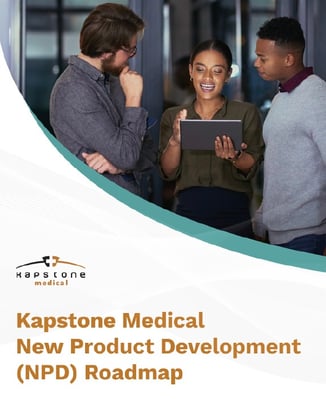The complexities of medical device development don’t begin and end with the device. The process surrounding development is inherently unpredictable, with shifting regulatory guidance, manufacturing snags, risk mitigation, materials and supply chain challenges — and the list goes on.
Companies choosing to manage every aspect of a medical device strategy often discover the amount of work required can quickly overwhelm internal teams, timelines, and budgets.
Collaborating with a single-source medical device consultancy streamlines each stage of new product development, bringing together expertise and efficiencies to strategically optimize costs in four ways.
1. Integrated design & testing
Medical device development isn’t a linear process. There are times when user needs change, decision-making may lag, data is delayed, or myriad other factors put development on hold. Instead of mismanaging time by waiting for information to catch up to the process, a single-source consultancy can create a process to manage concurrent activities.
Integrating design and usability testing early on in the design phase provides important opportunities. The resulting iterative design “loop” creates an environment in which design, testing, and prototyping aren’t start-and-stop based on the needs of one discipline or the other; they integrate seamlessly. In turn, efficiencies are gained in areas such as identifying and making necessary revisions to the device — steps that could cost up to 10X more to fix later in the process.
The integration of testing and design also produces critical learnings at earlier stages in the development lifecycle. Companies can leverage the information to strategically adapt next steps instead of reacting to findings later on, which is a more costly approach.
Finally, working on concurrent activities with the aid of a consultancy such as Kapstone Medical keeps the entire team engaged from concept through commercialization. When a project is consistently top of mind, there's less time and fewer resources lost getting team members back up to speed after months of inactivity.
2. Early involvement of regulatory affairs
It’s not uncommon for medical device companies to consider regulatory affairs after project engineering and design are well underway, if not nearing completion. While the regulatory submission does occur closer to the end of the process, there’s merit — and savings — in being proactive about involving regulatory affairs.
Kapstone is methodical in dovetailing design, intellectual property, regulatory, and quality documentation strategies. The comprehensive approach includes a regulatory assessment in the early stages of the process to help companies:
- Define and classify a medical device
- Identify the clinical and testing requirements for the unique device
- Determine predicate comparison and 510(k) submission strategy
- Plan for regulatory benchmarks instead of adjusting to meet them
As such, establishing process efficiencies about early involvement of regulatory affairs is central to developing the most cost-effective compliance strategy.
3. Improved manufacturing processes
Kapstone serves as the central hub for medical device development projects. Holistic single-sourcing is perhaps the easiest way for a company to save money because it combines and manages multiple competencies, including:
- Supply chain optimization through a one-supplier approach
- Design for Manufacturing and Assembly (and more) principles
- Materials selection, costs, alternatives, and quality control with proven systems and documentation
- Identification of automation, lean manufacturing, and other best practices that could cut production costs
4. Consistent risk mitigation
Risk mitigation has always been paramount, yet complicated, in the highly-regulated medical industry. However, its importance continues to grow as devices become more sophisticated, technologies more prevalent, and markets more expansive.
Central to time- and cost-effective risk mitigation is the documented risk management process that must be in place and approved by the U.S. Food and Drug Administration (FDA) or European Medical Device Regulation (MDR) or as defined by risk-management standards such as ISO 13485.
Risk mitigation isn’t limited to successfully documenting the process, however. It’s ongoing, and subject to audit. Kapstone’s broad-based experience and specialized expertise is critical in seamless risk management throughout a product’s life cycle.
Flexible Partnership, Ideal Solutions
Change is inevitable in medical device strategy, development, and program deployment. The key is to find a consultancy that’s flexible and can pivot quickly to address changes and needs. Kapstone is responsive and effective whenever we’re called on in the medical device development process, which helps companies get the right solution to market quickly and confidently.
Learn more about the benefits of single-sourcing and Kapstone’s holistic approach to collaborative medical device development in our eBook, the Kapstone Medical new Product Development (NPD) Roadmap. Click the button below to download your copy now.





